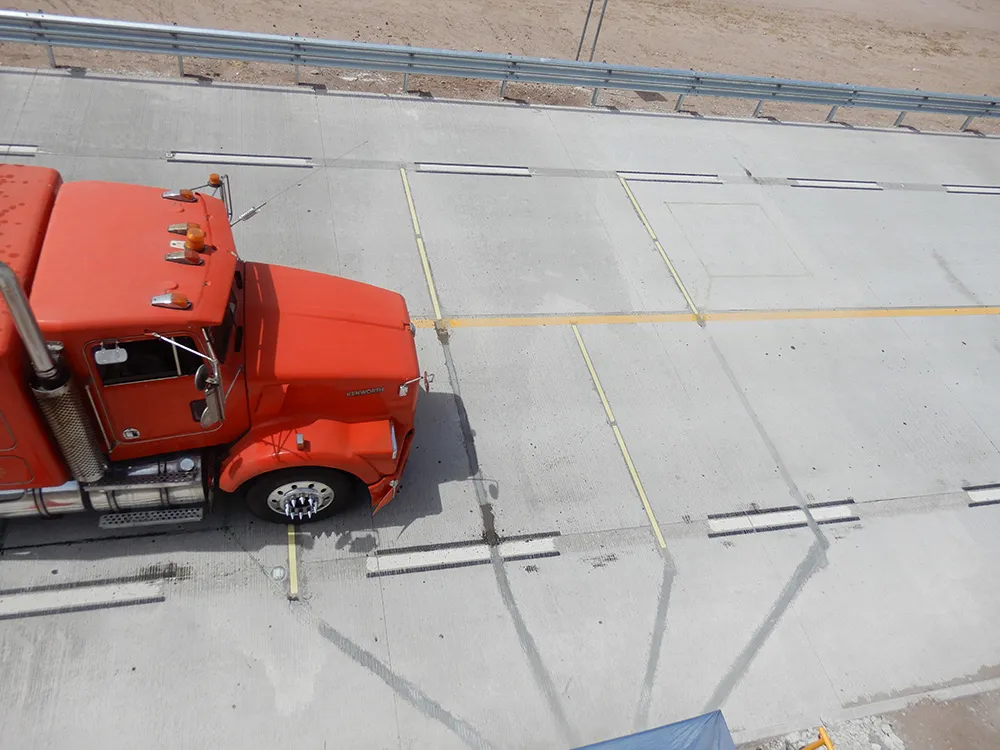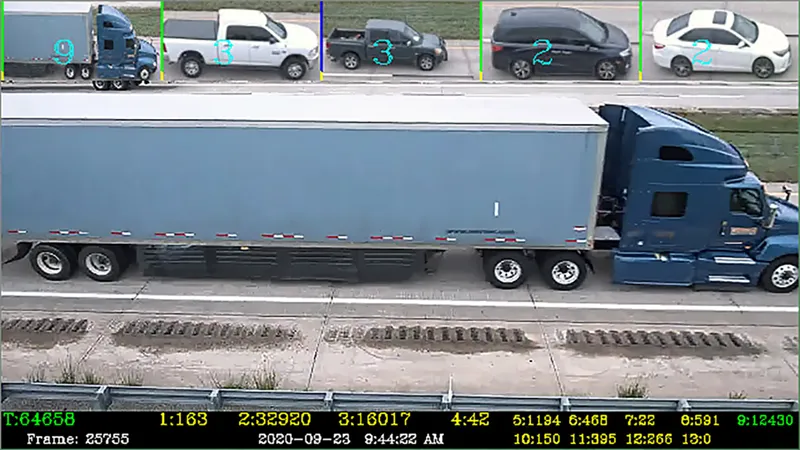Germany-headquartered Traffic Data Systems (TDS) is here at Intertraffic to launch the TDS WIM-DSP 32. The company says it is the first Weigh-In-Motion system that has PSHC (Piezo Sensor Health Care) long-term sensor monitoring.
According to TDS, it has set new standards in WIM with its PSHC and that TMCS-U, a complete TLS remote monitoring station, with WIM-DSP 32 can monitor up to eight WIM lanes with four Lineas sensors per lane. This complete eight lane weigh-in-motion system has an LED display that
April 5, 2016
Read time: 2 mins
Germany-headquartered 4592 Traffic Data Systems (TDS) is here at Intertraffic to launch the TDS WIM-DSP 32. The company says it is the first Weigh-In-Motion system that has PSHC (Piezo Sensor Health Care) long-term sensor monitoring.
According to TDS, it has set new standards in WIM with its PSHC and that TMCS-U, a complete TLS remote monitoring station, with WIM-DSP 32 can monitor up to eight WIM lanes with four Lineas sensors per lane. This complete eight lane weigh-in-motion system has an LED display that shows weights and speeds, in real time, of an existing WIM site.
The WIM-DSP 32 system was introduced in spring 2015 and TDS says it represents a technical quantum leap in the WIM systems area. Developed for use with657 Kistler Lineas sensors and Kistler charge amplifiers, the new design has an integral colour graphics display and touch keys for easy configuration and functional control.
“The WIM-DSP 32 enables a broad range of applications to be realised, starting from simple WIM systems for statistical purposes to sophisticated WIM-E (Weigh in Motion Enforcement) systems with monitoring and control of lane changes,” says Florian Weiss, president and CEO of Traffic Data Systems.
Meanwhile, TDS says its TMCS-U, still the most compact and powerful loop based counter/classifier, has been further upgraded. It came out the winner when 34 systems were recently tested in the NorSIKT test (Nordic System for Intelligent Classification of Traffic), in Amsberg, Sweden. Based on its high end pattern recognition algorithms it can now distinguish 14 vehicle classes on a ground-breaking level.
TDS is also introducing its upgraded Bike-DSP (Digital Signal Processing, cascadable) counter/classifier.
According to TDS, it has set new standards in WIM with its PSHC and that TMCS-U, a complete TLS remote monitoring station, with WIM-DSP 32 can monitor up to eight WIM lanes with four Lineas sensors per lane. This complete eight lane weigh-in-motion system has an LED display that shows weights and speeds, in real time, of an existing WIM site.
The WIM-DSP 32 system was introduced in spring 2015 and TDS says it represents a technical quantum leap in the WIM systems area. Developed for use with
“The WIM-DSP 32 enables a broad range of applications to be realised, starting from simple WIM systems for statistical purposes to sophisticated WIM-E (Weigh in Motion Enforcement) systems with monitoring and control of lane changes,” says Florian Weiss, president and CEO of Traffic Data Systems.
Meanwhile, TDS says its TMCS-U, still the most compact and powerful loop based counter/classifier, has been further upgraded. It came out the winner when 34 systems were recently tested in the NorSIKT test (Nordic System for Intelligent Classification of Traffic), in Amsberg, Sweden. Based on its high end pattern recognition algorithms it can now distinguish 14 vehicle classes on a ground-breaking level.
TDS is also introducing its upgraded Bike-DSP (Digital Signal Processing, cascadable) counter/classifier.









